Fruit and berry trees are considered an integral part of any garden and a household plot. Therefore, every gardener is trying annually to replenish its collection of useful trees, which give a large harvest of delicious and juicy berries and fruits. Apricot can rightly be considered a favorite fruit tree in the southern regions of Russia and other countries. From the middle of the summer, the counters in the markets are filled with yellow or orange apricots that exude just an unearthly fragrance. However, to enjoy your apricots, I want gardeners not only in regions with a warm climate, but also in more cool climatic zones, in this case we are talking about Siberia.
Thanks to the fruitful work of many domestic breeders, the cultivation of apricot in Siberia with a full-fledged harvest collection of delicious and large fruits has become possible.
In this article, we consider a botanical description of Apricot in more detail, we give a list of winter-hardy varieties of apricot for Siberia. And also note the important rules and nuances of agrotechnics of growing this fruit tree in cold climate conditions that will help every year to receive a rich harvest.
Apricot in Siberia: Features and Botanical Description
Apricot or from Latin Prúnus Armeniáca is one of the most popular fruit trees that are found at gardeners in Russia. The spread of this beneficial tree is comparable to other garden crops: plum, cherry, cherry, apple tree and others. Most recently, Apricot was considered invariably southern fruit trees, and in more northern regions enjoy the juicy taste of apricots, it was possible only from store shelves. Many gardeners of Siberia sought to grow apricot tree on their plot, but they invariably overtake. However, domestic breeders came to the rescue, thanks to the writings of which winter-hard-resistant varieties of apricot, which can be raised in the northern regions of Russia.
Apricot is a leaf full fruit tree, which belongs to the kind of plum and the large family of pink. Until now, it is unknown, where the apricot tree came from. According to some scientists, a tree with such delicious fruits came to Europe from China, but most scientists tend to believe that Apricot was delivered to the territory of Europe with Armenia. For cultivation in Siberia, species apricots are not suitable. Regions with a harsh climate require more persistent and unpretentious varieties, so breeders derive hybrid varieties. The first hybrid for Siberia was removed in Khabarovsk in 1968 by the domestic breeder of Kazmin. Since then, the tree with such fragrant fruits gradually spreads deep into Siberia. Today, grow apricot on its plot, however, it will require the knowledge of the peculiarities of culture and rules of growing in conditions of harsh climate.
Apricot description:
- Apricot is considered a leaf falling fruit tree, which will certainly become an excellent addition to any garden, even in Siberia.
- The root system of this tree is quite powerful and large, due to which the apricot tree itself can take moisture from the soil and nutrients. In addition, it is better to carry drought and severe frosts.
- At the height of Apricot can reach an average of 5-8 meters, however, in Siberia, such a fruit tree most often grows a little smaller sizes.
- The young tree has a gray-brown bark, smooth and brilliant. More adult bark apricots can crack.
- In the spring of the apricot tree is covered with green foliage, which has an oval ovoid shape. Sheet plate on top elongated, edge gear.
- The leaves are attached on the cutters, are located on the shoots. Other, have a rich green shade, can reach 8-9 cm.
- Muchlier than the appearance of foliage on apricot branches, single flowers are blooming, the diameter of which can reach 2.5-3 cm. White petals with pink veins.
- Flowers on Apricot are blooming in mid-March or in early April, it all depends on the specific variety.
- During abundant flowering, the apricot tree looks very impressive and decorative, while can decorate any garden and a homeland.
- After the end of flowering on the branches, fruits are formed - juicy aluminors of yellow-orange color with a longitudinal furrow. In the form of the fruit of apricot can be rounded, oval, elliptical or reversible. The size of the fruits of this tree depends on the specific variety. Today, thanks to the work of breeders, it became possible to receive fairly large fruits in Siberia.
- Apricot is a long-liver, in one place a tree can grow an average of 30 years.
- The first fruits on the young tree appear on the third year after landing, after which the fruiting is observed within 35-40 years.
- Apricot is distinguished by winter hardiness and frost resistance. Culture can withstand frosts up to minus 25 degrees. The apricot varieties for Siberia have a wide range of positive qualities: resistance to temperature drops, to spring frost, to excess moisture and sunny burns.
Siberia apricot varieties - detailed features
The climate of Siberia is distinguished by a harsh character, so the cultivation of thermal-loving plants in its territory is quite complicated. Modern varieties of apricot and old proven varieties provide the opportunity for gardeners to receive a good crop of juicy fruits even in conditions of a sharply changing climate of Siberia. However, this is possible mainly in the western and southern part of this region. We present the detailed characteristics of suitable apricot varieties for growing in Siberia.
- The variety of apricot "Siberian Baikalova". The tree of this variety can maximally reach a height of 3-3.5 m, while the crown grows up to 4 meters. Different with rapid growth and development. This is a universal grade that was led in 1979 in Khakassia. Mid-sized leaves, light green, slightly rounded shape. Fruits by weight can reach 25-37 grams. Present fruits flat-rounded with a small blush. The taste of the fruit of this apricot juicy, fragrant, medium in density, pulp orange shade, the taste of moderately sweet. The resistance to frosts in the wood is good, and the kidney is moderate. The yield of the Siberian Baikalov variety is 20 kg.
- Sort "Sayansky". This variety is a fruit tree of moderate growth, which is height as much as possible to reach 2.5-3 meters. Apricot "Sayansky" pleases good yield - approximately 16-18 kg from one tree. Blossom starts in the middle of May or in early June. The mass of one fetus is approximately 25-30 grams. They are rounded shape without visible Rumyanta.
- The variety of apricot "Khabarovsky". It is a self-aged variety, which was derived in 1949 by the domestic breeder of Kazmin. Apricot of this variety is a fairly powerful and unpretentious plant, which has a very spread and rare crown. The branches are coated with a medium-sized foliage, the sheet plate of which has an elongated-oval shape. This variety of apricot is characterized by quite large fruits, the weight of one can be 40 grams. In shape they are flashed on both sides, rounded-cone-shaped, yellow with a slightly carminous tint. The flesh flesh slightly dry, sweet-sour.
- Sort "Northern Lights". It is also a suitable variety of cultivation in a climate of Siberia. Refers to the elite group of apricot varieties. It is distinguished by the average power of growth and delights gardeners with good winter hardiness. Blooming the variety begins in the second half of May. The fruits of a rounded form with a clearly pronounced longitudinal seam. Fruits are characterized by sweet and juicy taste.
- Abricot variety Amur. It is a medium-wired samopidal variety of apricot, which is suitable for universal use. He was led in 1949 by the breeder of Kazmin. It is a fruit tree of medium height with a thick crown slightly oblong oval shape. The shoots are covered with a fairly large foliage with a pointed top. The fruits of this variety of apricot are quite large, the weight of one can be approximately 27-32 grams. In shape they are slightly elongated, rounded. They have a bright yellow color, as well as the carmine blush and the same color point. The flesh is a little crispy, sour-sweet.
- The variety of apricot "Academician". This variety of fruit trees is considered partially self-free, and for better fruiting it is recommended to plant a variety of varieties of Khabarovsky and Amur. Pleases gardeners with large fruits. It can boast excellent winter hardiness and frost resistance, as it can reduce the temperature drop to minus 38-40 degrees. In the form of fruit rounded, elongated, have a pronounced keyboard on the top. To the taste of sour-sweet, slight crispy. On average, the weight of one fetus is 30-35 grams, this indicator can be 50-55 grams.
- Sort "Northern Triumph". This fruit tree is characterized by moderate winter hardiness, has a dessert destination. It is a tall tree with a wide scattered crown. The weight of one fetus is approximately 30 grams. Inside it is an orange flesh with a well-lagging bone.
- Grade "Mountain Abakan". It is a medium height tree that reaches 3 meters. The grade pleases unpretentious and good stability to the cold. The weight of one fetus average is 30 grams.
In addition to the above varieties of this fruit tree, the gardeners were loved by colon-shaped apricot varieties for Siberia, which are distinguished by low growth and great yields.
Apricot reproduction in Siberia: The most common ways
Many gardeners are wondering how to grow apricot in Siberia and regularly receive a good crop of delicious and juicy fruits. Undoubtedly for the first time you need to plant ready-made seedlings on the site. And already in the future, if desired, the whole garden of apricot fruit trees can be used various methods of reproduction of this culture. Apricot in Siberia can be breed in the following ways: seeds and vaccination method.
Apricot reproduction in Siberia Bone
- Of course, it is much easier and faster to plant Apricot with a purchased seedling. However, quite often, many gardeners have a desire to try to grow a fruit tree from a bone. In this case, it is important to take into account several rules.
- First of all, it is necessary to use apricot bones growing in Siberia. So you are guaranteed to get strong and hardy seedlings.
- Next, on the tree, you need to choose a slightly overripe fruit with an easily separated bone, which is carefully removed.
- After removing all the bones need to be thoroughly rinsed and dried in a ventilated room, but not in the open sun.
- In the next step, it is important to select only high-quality planting material. To do this, place all bones into the container and fill them with water. Those bones that pop up are not suitable for landing.
- Seed seeds apricot can be autumn or in the spring. With autumn landing, you can not guess, because if warming comes, seedlings can take.
- Therefore, the best after winter stratification in the refrigerator bones are planted into a specially prepared container.
- Approximately by April, seeds will germinate.
- After they fix it, it is recommended to transplant seedlings to a protected bed or a greenhouse.
If you decide to use the method of breeding for breeding on its site of apricot, then it is necessary to know first of all what you can instill apricot in Siberia to ultimately get healthy plants. In this case, experienced gardeners recommend using wild apricot seedlings.
Landing apricot in Siberia: phased description of the process
As already noted, the cultivation of apricot in Siberia has its own characteristics and difficulties that need to be taken into account and realize to obtain healthy fruit trees. First of all, it is important to clearly and competently carry out the preparatory work, which is especially important in conditions of harsh climate. Each gardener must acquire high-quality and suitable seedlings, and also choose on its site an ideal suitable place for landing. Consider the basic rules of preparatory work and the actual process of planting apricot in Siberia.
Stage 1. Selection and purchase of apricot seedlings in Siberia
- First of all, it is necessary to think about finding and buying seedlings of this fruit tree. This stage is considered the most important, since ordinary apricots in Siberia can be very meaningless.
- It is recommended to buy only the apricots of those varieties that have been derived specifically for this region, taking into account all climatic features. You should not bring seedlings from the southern regions and try to grow trees in Siberia - these young plants will die.
- It is also recommended to buy zoned apricot seedlings, i.e. The planting material that was grown in your climatic region. Such seedlings are much better leaving.
- When buying seedlings, you must pay attention to the description of the variety, as well as on the manufacturer declared indicators of the winter resistance and frost-resistant plants.
- Before buying it is always important to carefully inspect the seedlings. Soothes should be strong and elastic, kidneys and leaves fresh and healthy. The soil in the container should be clean and moistened.
Stage 2. Selection of landing sites and soil preparation for apricot in Siberia
- Apricot prefers to grow on solar and warm places, where throughout the day there are solar rays throughout the day.
- The tree will not grow and develop in lowlands, where cold air is constantly stared.
- It is recommended to plant apricot seedlings on elevations and small hills. It is suitable for this, the southern sludge slope.
- This plant does not make close to groundwater.
- Heavy soil for growing this culture is not suitable. It is best to choose a lightweight lighter soil with a slightly alkaline reaction.
- Before landing, it is important to carefully switch the selected area, break and disperse the place. Adding fertilizer during planting is not recommended. Most often, gardeners offer to use Michurinsky method, when a plant becomes more frost-resistant without fertilizer.
Stage 3. The process of planting apricot in Siberia
- On the territory of Siberia, the planting of apricot seedlings is recommended to be held early in the spring when the soil warms up to 13-15 cm. If you plant the plant in the fall, then for the winter it will certainly perish.
- In addition, it is necessary to remember that several varieties of apricot for pollination are needed.
- Saplings need to be chosen not older than 2 years with a developed root system. At the same time, the roots can not damage and allow them to dry.
- Next, you need to prepare landing pits, the depth of which should be about 50 cm, and the width is 50-70 cm.
- It is also important to take into account the distance between individual seedlings, which need a space for growth. The minimum distance between the wells is considered 5 meters.
- On the bottom of each landing pit to prevent the stagnation of moisture, it is necessary to pour a layer of drainage from broken bricks, crumples or small stones.
- In the soil you can add a bit of humus and complex fertilizers, after which the soil falls asleep into the pit. Next, a couple of weeks should be waiting for soil donkey.
- Before planting seedlings with an open root system, you need to put in a container with water by about 12 hours.
- Placing seedlings in the pits in such a way that the root system is 5 cm above the surface.
- After planting plants you need to pour.
Apricots in Siberia: Care and Features of Growing
By numerous reviews, apricots in Siberia can be raised, however, this process will require much higher costs and time.
- Watering. The plant needs moderate watering. On average, each tree needs three abundant irrigation. What to water is recommended in special grooves around the plant. The first watering is carried out in early spring, the second during the active growth of shoots, and the third before harvesting. It is also recommended to carry out moisture profitable watering in late spring, which will help the plant to survive frosts.
- Loosening and mulching. Apricot prefers to grow on air-permeable soil, so it is necessary to loosen the soil around the seedlings regularly. Also, the rolling circle can be mulched by humus.
- Podrel. A variety of fertilizers contribute every year. About a year after landing, it is necessary to make a solution of bird litter. A year later, it is recommended to add comprehensive mineral fertilizers. I've been going to make a korovyan after 4 years. Next, feeding will be made in the introduction of ammonia nitrate, superphosphate, potassium chloride.
- Trimming. For stable fruiting, Apricot needs regular trimming, as the fruits are tied on annual escapes. In the spring you need to slightly shorten the overwhelming shoots, and in the fall most often carry out the rejuvenating trimming.
- Shelter for the winter. On the territory of Siberia, special attention to the shelter of seedlings is particularly relevant. Upon the onset of the first frost, the priority circle should be closed with humus and hide the bag. You can also whitewash the barrel and the lower part of the branches to protect against sunburn. In winter, in addition, the rolling circle is covered with snow.
Apricot is considered the desired fruit tree on any plot, including in Siberia. And thanks to the strengthened work of domestic breeders, endless varieties of this culture appeared, which are well tolerated frost and give a stable crop of juicy fruits.

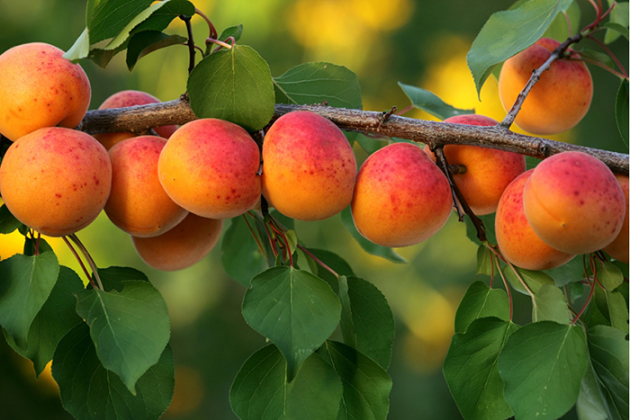
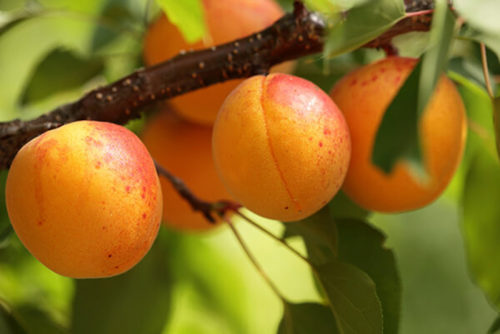

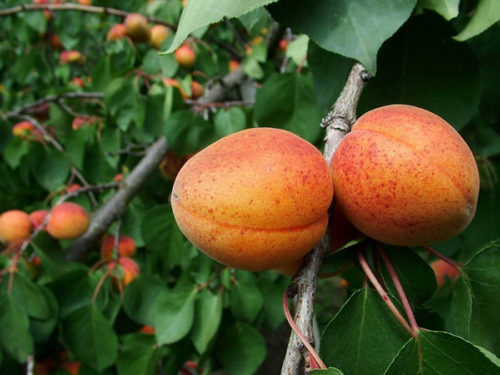




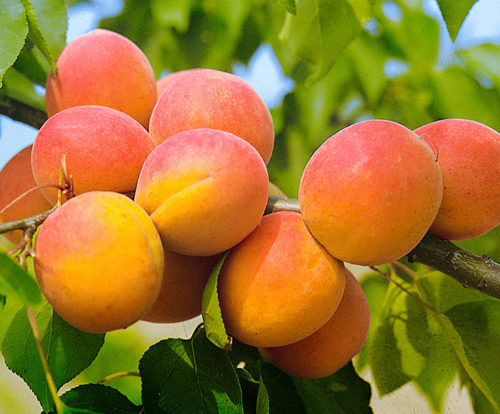
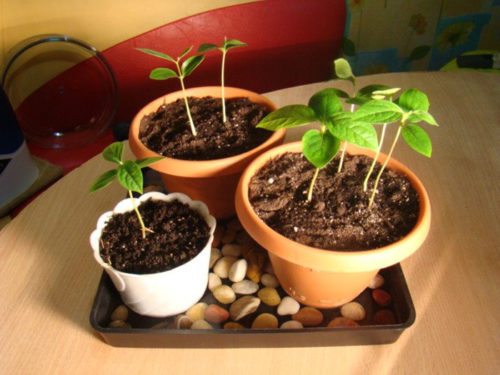

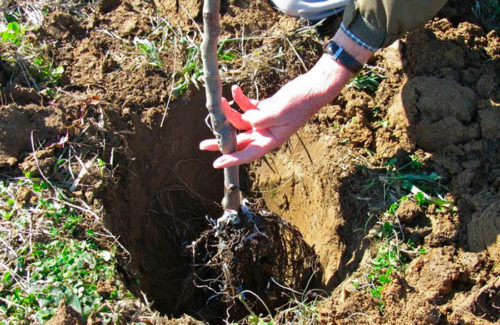
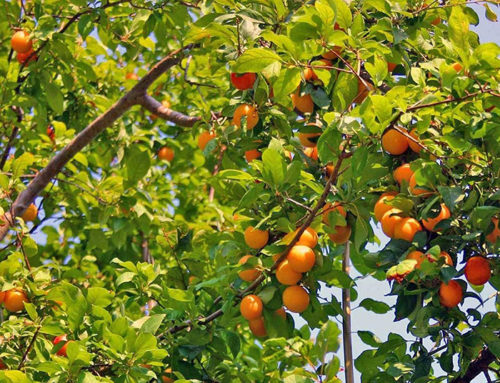












 Start a discussion ...
Start a discussion ...